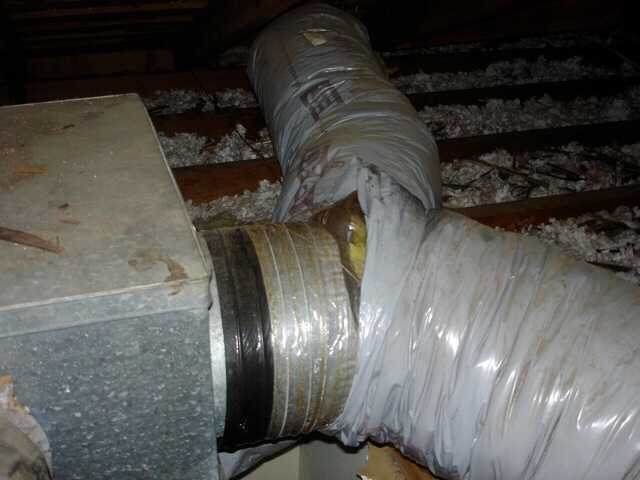Get Tech Tips
Subscribe to free tech tips.
Duct Leakage Can Be Costly

This tech tip was written by one of the best all-around HVAC minds out there: Neil Comparetto.
I think that we all can agree that duct leakage is not ideal. Our job is to condition the space. If we can’t control the air, that becomes difficult. On top of that, anytime the ducts leak, you are losing already paid-for conditioned air. But really, how bad could it be?
I’m in Richmond, Virginia, so we’ll use that as our example location. According to ACCA Manual J (more about Manual J HERE), in summer design conditions, our outdoor design temperature is 92° Fahrenheit with a moisture content of 106 grains per pound. (A grain is a measurement unit of absolute moisture.) Let’s use the indoor conditions 75° F and 50% relative humidity, which converts to 65 grains of moisture.
Our example system will be a 3-ton air conditioner moving 1200 CFM with ducts in a vented attic. For this exercise, we won’t get into duct sensible heat gain that even a 100% tight duct system will have to overcome.
This system will have a modest 10% supply duct leakage into the attic (Energy Star estimates that the typical duct system has 20-30% duct leakage). Assume 0% return leakage (which is unlikely). So, we already know that 10% of our capacity is gone, never to return to the attic again.
On a 3-ton air conditioner, that will be roughly 3,600 BTUH. We are now delivering 1080 CFM of supply air to the living space and returning 1200 CFM. Where does the additional 120 CFM of return air come from? You guessed it: outside. The supply duct leakage into the attic, outside of our thermal and pressure boundary, has now brought the living space into a negative pressure. No big deal; it’s only 120 CFM… but have you ever done the math!?
Stick with me. It’s not as bad as it looks. Here are the formulas for the sensible and latent heat required to bring the infiltration air back to indoor conditions (75°/50%RH):
Sensible BTUH = 1.08 x CFM x (Outdoor temp – indoor temp) Latent BTUH = 0.68 x CFM x (Outdoor grains – Indoor grains)
Let's use 92° F as our outdoor air temperature number. In all likelihood, considering that the attic floor/ceiling plane is one of the leakiest parts of the house (and the attic is typically >120° F), that real-life number will be higher than whatever the outdoor temperature is.
Our example will look like this:
1.08 x 120 CFM x (92°-75°) = 2,203 BTUH of sensible heat
0.68 x 120 CFM x (106 grains – 65 grains) = 3,346 BTUH of latent heat
2,203 + 3,346= 5,549 btuh of total heat.
That is an additional 5,549 BTUH of total heat. The 3,346 BTUH of latent heat is the more difficult number to deal with. Next time you are bored, flip through your favorite air conditioner’s product data and see what it can produce; you may be surprised. Don’t forget about the 3,600 BTUH that’s up in the attic somewhere. Just think: this is from only 10% supply duct leakage; considerably more is likely.
As you can imagine, this problem doesn’t go away during the heating season. Typically, outside air is much drier than indoor air, and duct leakage will dry out the indoor space. If the heating system is a heat pump, the capacity loss is corrected by electric strip heat, which is bad. That means when you seal the ducts, auxiliary heat is reduced, which is good.
Leaky ducts can contribute to many more issues than just energy loss and comfort. Did you know that a one-square-inch hole in the duct system is equal to a thirty-inch hole in the building envelope? The potential to create pressure imbalances in the building is tremendous. Pressure imbalances can cause many issues, like flues back-drafting, excess dust and allergens, uneven temperatures, and moisture issues, to name a few.
Something as simple as sealing ducts can solve many issues. Hopefully, you include it in your scope of work.
—Neil











Comments
Nicely written Neil!
Nicely written Neil!
To leave a comment, you need to log in.
Log In